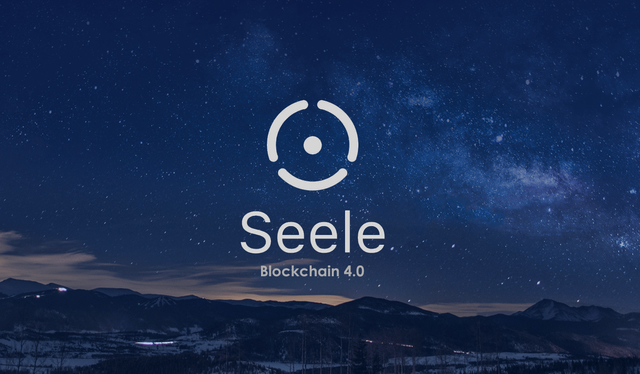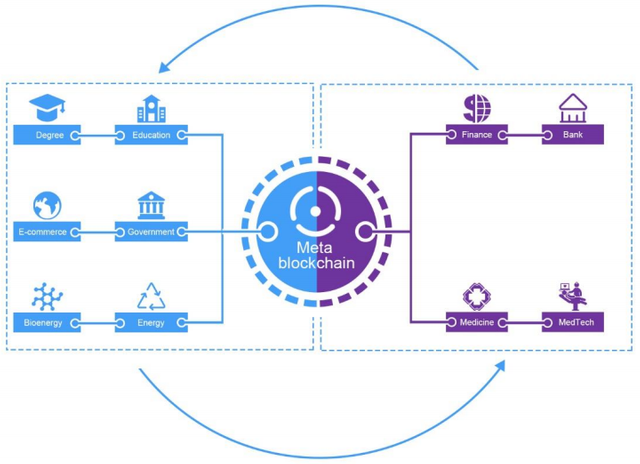Seele is a new generation Blockchain, called 4.0, which aims to democratize the use of Blockchain and the Value Interne by solving the main problems of current Blockchains.

1. The blockchain is growing but struggles to win
The blockchain is a technology that allows to store and transmit information transparently, securely and without a central control body. It could be compared to a huge database that contains the history of all the exchanges made between its users since its creation. The great particularity of the blockchain is that it relies on a decentralized architecture, that is to say that it is not hosted by a single server but by some users. There is no intermediary so that everyone can check for themselves the validity of the chain. The information contained in each block (transactions, property titles, contracts, etc.) is protected by cryptographic methods that prevent users from modifying them afterwards.
Many Blockchains have emerged and their use has grown steadily through crypto-currencies and other uses. Except that, this massive use has brought to light the problems of the current Blockchains. The main problems are:
- The impossibility to scale for large-scale needs; the low number of transactions per second
- The impossibility to support various commercial scenarios
- The inability to exchange information and share assets between different Blockchains.
Satoshi Nakamoto, the inventor of Bitcoin, was the first to apply a decentralized blockchain. Bitcoin (BTC) is a so-called first-generation blockchain which, although very secure, lacks efficiency, scalability and allows for very few transactions per second (TPS).
Ethereum (ETH) is considered like the second generation blockchain. Ethereum has made many improvements over Bitcoin (mainly smart contracts) but is only able to reach about 20 TPS, which is still too low for large scale adoption. For example, the popular CryptoKitties game has been able to clutter the Ethereum blockchain, slowing the transaction speed considerably.
Third generation blockchains such as EOS, Cosmos, Quarkchain or Dfinity are trying to improve this low TPS number. However, this improvement in the number of TPS may affect the security and efficiency of these blockchains.
Therefore, a proper balance between scalability, security and efficiency does not exist yet despite all existing attempts.
On the basis of this, Seele decided to go back to Blockchain's core values to solve these problems by trying to make progress on communication protocols, network infrastructure and consensus algorithm.
2. A complete solution
Seele, which means "soul" in German, is a new generation blockchain so-called blockchain 4.0. Seele's goal is to solve the main problems of the current Blockchain (scalability, security and efficiency) in order to promote the development of the Blockchain and the value-added Internet.
In order to achieve its ambition, Seele will rely on four main components:
- Neural consensus algorithm
The finding is quite simple: no current consensus algorithms can associate scalability, security and efficiency, whether it is PoW (scalability and security but no efficiency), POS (efficiency but no security or scalability), DPOS (scalability and security but no efficiency) ... In order to correct this defect and combine scalability, security and efficiency, Seele has created a new consensus algorithm inspired by biological neural networks. This algorithm is known as "Neural consensus algorithm".
Its principle is that instead of involving all the participants in the network to produce blocks, a random choice is made among the potential block producers who, in turn, will select the final producer of the block. The nodes will also use a continuous vote instead of a discret vote and all nodes will participate simultaneously in an asynchronous environment.
One of the most advantageous features of this consensus algorithm is its linear scalability ie the performance increases linearly with the size of the node. The larger the size of the node, the faster the convergence and the better the performance. To make things more concrete, Seele's test network has reached a 100K TPS transaction speed, while reducing the transaction confirmation time by several seconds.
In addition, this algorithm requires a low transmission rate because fewer nodes participate in the consensus at a given moment. On the security side, the algorithm makes the network immune to Sybil attacks because the nodes are selected randomly, which makes a potential attack extremely expensive.
- Heterogeneous Forest Network
Due to the diversity of companies and their activities, it's difficult for a single-chain architecture to perfectly support several heterogeneous services. Taking inspiration from the Domain Name System (DNS) protocol and in order to solve this problem, Seele is proposing a new kind of network known as the "Heterogeneous Forest Network".

This network consists of:
- A global service chain called "Meta chain" that provides global configuration and scheduling service to subnets.
- Different subnets that can serve one or more companies.
The network is divided according to business scenarios. Each subnets can manage different service scenarios and can define its own governance and security mechanisms. All of these subnets create a plurality of small independent ecosystems that can also interact with each other via inter-channel and inter-domain protocols. Their combinations constitute a complete ecosystem.
In addition, this network is secure, efficient and compatible with current blockchain ecosystems. Heterogeneous Forest Network enables Seele to offer a flexible and versatile Blockchain that can be adapted to a variety of complex commercial use cases.
- Value Transport Protocol et VHTTP
The current Blockchains (Bitcoin, Ethereum, ...) do not allow any form of communication or exchange between them which makes them isolated from each other and completely incompatible. Based on its Heterogeneous Forest Network, Seele offers VTP and VHTTP protocols to correct this problem.
The VTP protocol facilitates the systematic naming of each asset, its discovery as well as its addressing. The uniqueness and naming of an asset on the network is guaranteed by a UAI (Uniform Asset Identifier).
The VTP protocol relies on another protocol, the VHTTP, to facilitate exchanges between the chains whether on-chain or off-chain. In addition, VHTTP is compatible with the existing HTTP protocol which allows the recognition of requests in HTTP format This allows users outside the chain to access the assets and data of the chain directly via the HTTP protocol.
To optimize its entire network, Seele incorporates a route cache mechanism that enables efficient use of the network while improving data availability.
- Quick Value Internet Connection
Blockchains are complex networks and current latencies create problems in terms of performance and blocks synchronization. In order to propose a solution more adapted to the decentralized ecosystems, Seele has set up Qvic (Quick Value Internet Connection).
Qvic's goal is to combine the integrity and reliability of the TCP protocol with the speed and efficiency of the UDP protocol. Qvic has very interesting features for a decentralized network since it has low latency and high tolerance for packet losses.
More specifically, initial tests were conducted on a network of 50 machines distributed in data centers in Beijing, Shanghai, Guangzhou and London. Using the Qvic protocol and testing with 1G files, the transfer rate has gone from 100 Kbps to 1 Mbps and the transaction confirmation time has been reduced by 70%.
3. A strong team very experienced
The team of Seele is made up of 16 people, mostly developers, scientists and data specialists with experience in large companies such as Microsoft or Baidu.
The team is driven by three leaders who seem to be experienced in computer engineering, modeling and blockchain technology: Dr. Maolin Zheng (CEO), Dr. Nick Smith (COO) and Dr. Wei Bi (Scientist).
Dr. Maolin Zheng (CEO) is a specialist in big data, mathematical modeling and predictive analytics, which also has a strong technical background. He has held positions as CTO, data scientist and decision optimization expert in various companies in San Francisco and Beijing. He also completed a post-doctorate at the Université de Montréal on the topic of large-scale mathematical programming and graph theory and its application in the structure of molecules.
Dr. Nick Smith (COO), is an English researcher and medical data analyst. He has several years of experience in distributed systems, cloud computing, distributed network architecture design and performance testing. In addition to that, he is very experienced in data analysis, data modeling, image processing and data conversion.
Dr. Wei Bi (Scientist) is probably the best known member of the team. He has an MSc in Computer Science from Oxford University and a postdoctoral fellow at the University of London. His research has focused on blockchain, cryptography, data analysis, image processing and visual science. He is the Deputy Secretary General of the China Blockchain Innovation and Application Alliance and the author of several patents related to Blockchain technology (eight, published in 2017). He has also been invited to attend international academic conferences and his articles / opinions have been collected by the BBC, London Chinese Radio and other media.
The rest of the team is a real asset to the project as they are mainly engineers, architects and experts with a lot of experience in all areas necessary for the success of Seele: the Blockchain , smart contracts, consensus algorithms, distributed networks, big data and cryptocurrencies.
In addition, the project is supported by the research areas of Oxford University, Stanford University and London.
4. A short roadmap
The roadmap of Seele is very fast but very promising since it foresees the release of its main net release for the end of the year 2018. It is a good bet that the year 2019 will see many dAPP relying on the blockchain from SEELE.
5. First conclusive tests
The first tests performed on the Seele's Blockchain are very impressive in terms of scalability, safety and efficiency.
Regarding the currently very low TPS on the current Blockchain, on its test network, Seele achieved a 100K TPS, while reducing the transaction confirmation time by several seconds. This represents a significant improvement over the twenty TPS currently available on the Blockchain Ethereum.
The use of Qivc, which has the characteristics of having low latency and high tolerance for packet loss, also brings significant gains. According to initial tests conducted on a network of 50 machines distributed in data centers in Beijing, Shanghai, Guangzhou and London (and using 1G files), the transmission rate went from 100 Kbps to 1 Mbps and the Confirmation time of a transaction has been reduced by 70%.
Some links about the project
- Website: http://seele.pro
- WhitePaper: https://s3.ap-northeast-2.amazonaws.com/wp.s3.seele.pro/Seele_tech_whitepaper_EN_v2.0.pdf
- Telegram: https://t.me/seeletech
- Medium: https://medium.com/seeletech
- Github: https://github.com/seeleteam
- Facebook: https://facebook.com/seeletech
- Twitter: https://twitter.com/SeeleTech
- Bounty Thread: https://bounty.seele.pro/
Follow me: Twitter — BitcoinTalk
/!\ All images and videos are from the Whitepaper or the seele.pro website
Thank you for your work ! This blockchain seems to be very promising and powerful!
Downvoting a post can decrease pending rewards and make it less visible. Common reasons:
Submit